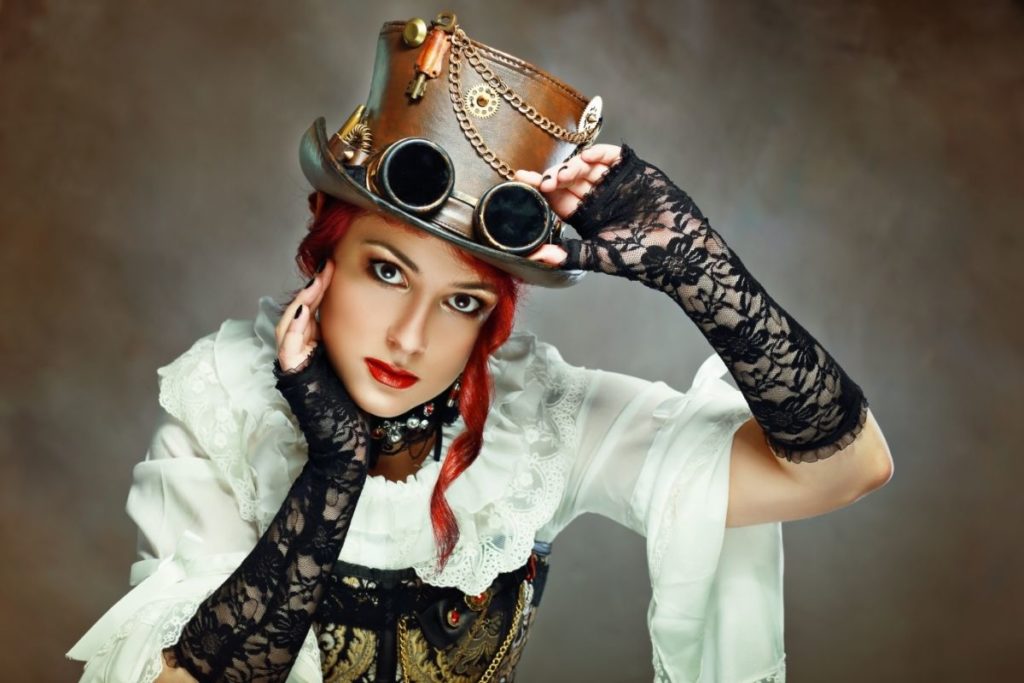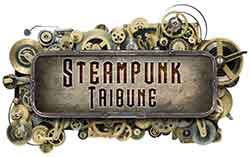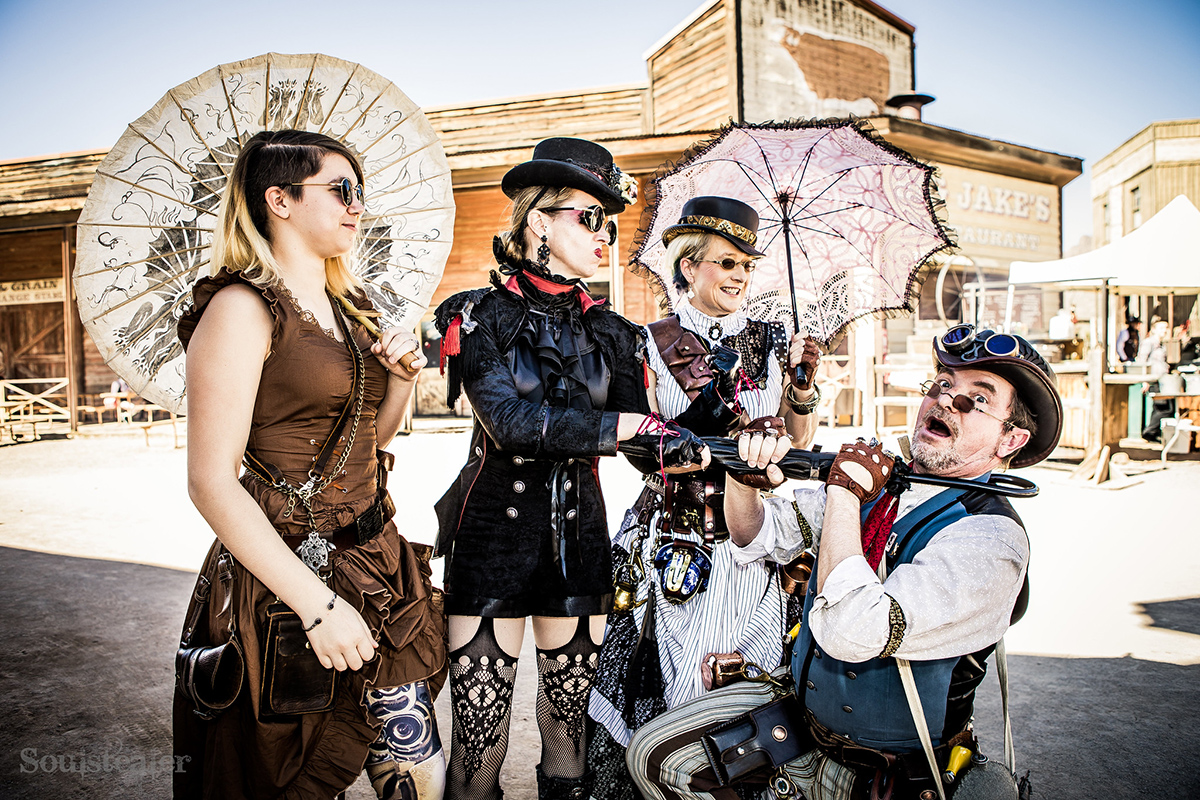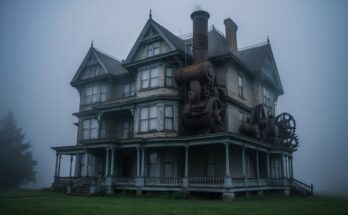So, over the last couple of years, you might have heard the term ‘steampunk’ thrown around. Maybe you’ve heard a game be described as a ‘steampunk dystopia’. Or you’ve read a book that has it as a subtitle. Or maybe you’re just wondering why so many people have gone to a convention wearing a top hat and corset.

If you’re confused about where this all came from, don’t worry. Plenty of new people is discovering it for the first time, either through fashion, music, video games, or movies. There has never been more steampunk content. Which has led some people to wonder what all the hype is about.
Well, hopefully, that’s what this article will help to discuss what steampunk is about. What it looks like, where it comes from, and also, some context behind it.
There’s a lot to cover, so let’s put on our mad scientist glasses, and jump right in!
Where It All Comes From
The trouble we have, when trying to figure out where steampunk came from, is defining a starting point. There have been a lot of works of fiction throughout the 20th century that tried to ape the look and aesthetic of classic Victorian science-fiction, but these would not have been considered as ‘steampunk’ until the term was eventually coined in the mid-1980s.
As more works of fiction were attempting to capture the look and feel of the Victorian era in science fiction, writer and author K.W. Jeter believed that, as this new wave of fiction was finding its feet, it needed to have a term that would accurately describe it.
As a reference to the latest genre that was gripping science fiction at the time, Cyberpunk, Jeter jokingly came up with the name ‘steampunk’ in a letter to Locus, the science fiction magazine.
Truly, a Nostradamus of his time. Or perhaps, an Edward Bellamy, if we want to stay on topic.
Since the term was coined, steampunk went on to define a whole new wave of art and media that would collectively come to be known as ‘Retrofuturism’ and would eventually lead to the creation of entirely new subgenres of their own, such as Dieselpunk, which attempts to emulate what the future or modern-day would like through the lens of both the aesthetic and the culture of the 1920s, 1930s, and the 1940’s to a lesser extent. But that’s a story and subgenre for another time.
Retrofuturism In A Nutshell
Now, having just heard the term ‘retrofuturism’, you might be wondering what exactly that means, and how and why it relates to steampunk.
Retrofuturism is a pretty self-explanatory term, but it is worth defining it, so the way can see where steampunk originally came from as both a genre and setting. What retrofuturism describes, is basically the creative act of imagining what the present day might look like, if viewed through the cultural lens of an older period of time.
Now, this might bring to mind some ideas of how old science-fiction often portrayed what our present would look like, the then-future for them. Stories and movies like 2001: A Space Odyssey typically come to mind when we are talking about fiction that depicts the future in ways that haven’t come to pass.
There has been a huge amount of discussion about what technically counts as in each subgenre, but the key feature that usually distinguishes retrofuturism, and the steampunk genre, from these older works of fiction, is that there is a clear separation of time between the present day, where the audience is, and the time period that the audience has chosen to focus on.
Rather than it being a contemporary, bold vision of the future like much of speculative fiction falls into, it is a deliberate attempt to reference and emulate a view and period that is no longer widely held. In steampunk’s case, it is focused on the 19th century and the technology and culture that surround it.
Most scholars today would say that retrofuturism, as a movement in art, media, and literature, is considered a subgenre within steampunk, rather than its own separate style, as it grew out of steampunk itself.
What Does Steampunk Look Like?

If you’ve spent any amount of time searching ‘steampunk’ on the internet, you’ll have found countless DIY creations made of or to look like copper, brass, polished wood, bronze, and a whole range of other types of old-fashioned looking items. And whilst this is definitely a part of the steampunk Aesthetic, it is by no means all that there is to it.
The Technology
Probably the biggest aspect that seems to capture what steampunk is about, is how technology plays into it.
The biggest inspirations for modern steampunk creatures are the elements of speculative uses for technology that we find in science fiction authors of the time, with the biggest influence for a lot of these ideas coming from the works of Jules Verne and H.G. Wells, particularly stories such as Twenty Thousand Leagues under the Sea, The Time Machine, and War of the Worlds.
These are takes on technologies that were very new to authors of the time, such as the first engine-propelled submarine ‘The Plongeur’, which Verne saw a model of at the International Exposition of 1867. The idea of an underwater ship, a piece of cutting-edge technology of the time, is what inspired the creation of the iconic submarine ‘The Nautilus’ the ship that Captain Nemo pilots.
Alternatively, many other iconic pieces of literature that modern steampunk borrows visuals and elements from, are completely fictional, such as the time machine in H.G. Well’s story of the same name.
The idea of such a machine that can move through time would be possible may seem far-fetched to us in the modern-day. And rightly so, as without being able to move faster than the speed of light, we are stuck having to time-travel the old-fashioned way: one second at a time.
The History
But that is somewhat missing the point of much of speculative fiction of the 18th and 19th centuries.
Keep in mind that for authors in the middle of the 19th century, many countries were in the middle of the industrial revolution, with new technologies and discoveries every year that were shattering the notions of what people had thought possible for the time.
Powered engines were able to move people around the world at unprecedented speeds that humanity had never seen before. With the invention of the steam train, for example, journeys that previously would have taken months or years to undertake could be done in a matter of weeks or even days in some cases.
It was this new ability to move around at unprecedented speeds that transformed many countries into the nations that we now recognize in the modern world.
Take the United States, for example. By the beginning of the 19th century, it had taken almost 200 years, and a war of independence, for the country to occupy the eastern seaboard of North America. And many predicted that it would take just as long to occupy the lands west of the Appalachian Mountains, if not longer.
By the end of the century, less than half the projected time, the United States had conquered most of the land we would consider today as American. And whilst a hundred years might seem like a long time to a single person like you or me, in the grand scale of human civilization, much less human history, one hundred years is a relative blink of an eye.
It’s this transformative power of technology, the ability to reshape the borders of the surrounding lands, that appealed to the speculative authors of the time.
It’s what encouraged Jules Verne to speculate about the possibility of a cutting-edge underwater craft to explore the world beneath the waves.
Likewise, it’s also what allowed H.G. Wells to speculate about the ability to move across time, instead of space. And it’s what made many of their other contemporaries ponder what else could be the next frontier that humanity would conquer.
The Reimagining
That is why many elements of steampunk today, will often take the opportunity to adopt modern technologies that exist today, and reinterpret them to emulate what a Victorian may have imagined they would look like.
That’s why you may find illustrations and drawings of planes as ‘flying machines’, which frequently look more like stylized boats with wings than anything we might think of today as an aircraft. These even have their roots in Victorian speculative fiction, with Jule’s Verne’s Around the World in 80 Days being one of the first popular ideas on what a machine that allows you to travel in the sky might be like.
Another popular invention of the 20th century, the world of Robotics, is also another popular subject that, whilst not unheard of in speculative fiction of the day, is definitely a key part of the modern aesthetic, with clockwork machines that can be both small and adorable, or huge and powerful laborers, not being uncommon, both in steampunk literature and in steampunk hobby craft.
The Fashion

Since the early 2000s, steampunk has increasingly started to become a popular look to emulate in the world of fashion. ‘Salon’ a convention held in 2006, was a Neo-Victorian event where we first saw what the aesthetic of modern steampunk looks like.
Many aspects of the clothing in steampunk are inspired by the dominant fashions that were popular in the 19th century, especially elements of late Victorian or Rococo fashion. Bodices, top hats corsets are pretty common staples of a good steampunk outfit.
However, it is also worth mentioning that steampunk borrows ideas and trends from other subcultures that it developed alongside. Punk, perhaps unsurprisingly, is one of the clearest influences on modern steampunk styles, outside the Victorian era. Deliberately torn jeans, frayed shirts, and heavy use of makeup are all just as likely to make up part of a steampunk costume like a pair of mad scientist’s goggles, or a pith helmet is.
Not only that but the disheveled look that goth and punk culture bring also bring in elements of post-apocalyptic design. Outfits that have been deliberately ruined or tarnished aren’t by accident and are quite common in some circles of steampunk outfits, an idea we will return to shortly.
Interestingly, steampunk also takes a lot of inspiration from the Japanese Lolita subculture, which takes many inspirational cues from the same sources, but with a greater emphasis on traditionally European feminine clothing. Large frilly dresses, based on crinoline designs, are not uncommon amongst both men and women.
Probably the most exciting part about steampunk fashion is, like any living art movement, it is still evolving as the genre develops. As more elements of fashion from the 19th century are adopted and adapted into the mainstream movement, who knows where it will draw influence from next?
But back onto a topic, we said we’d come back to, we briefly mentioned post-apocalyptic elements in steampunk fashion. Considering how much we have discussed the ambition and optimism of Victorian culture that is emulated in its modern reimagining, surely anything as dystopic as the apocalypse doesn’t seem at home here?
But the funny thing about that is, if you look at the history going on at the same time as the technology, and the fashion, things start to look a little clearer.
The Politics
It’s an uncomfortable subject, but it is one that needs to be mentioned when discussing the influences of the steampunk movement. Especially since much of the Victorian’s ideas of what the future would bring, were tied to the beliefs and philosophies of the time.
For most of the European world, the 19th century was the last full century when the countries that ruled over the largest empires of the day were attempting to expand their wealth and influence, either through economic or military might.
The major colonial powers, such as Britain, France, and Germany, along with a whole host of other countries, were scrambling to take control of lands that had not been occupied by the other major world powers, which meant that much of land in both Africa and Asia fell under the control of foreign powers.
For the dominant powers, this meant unprecedented wealth and resources in the home countries. But for the countries being occupied by those powers, being ruled over, or fighting conflicts against people who are not your own, and seemed overwhelmingly powerful, was probably not an uncommon sentiment in many countries.
Not only that but for those imperial powers, there was an anxiety that, at some point, the other imperial powers, now wealthy and incredibly powerful, may eventually turn on each other, when there were no new lands to conquer. What would a conflict like that look like?
This is something that speculative writers seemed to be aware of. to have captured some of this anxiety of a technologically advanced civilization, coming to wreak havoc on a proud nation, is virtually the premise of H.G. Well’s War of the Worlds, where the technologically superior Martian’s land on Earth, and lay waste to Britain and its people, and there is very little that the characters can do to stop it.
With such a dire outlook from both late-Victorian culture and literature, it’s no wonder that some of those elements would make their way into elements of steampunk subculture.
Stories and artwork of powerful weapons of war can be found in many pieces in the genre, whether they are powerful dirigibles of war, or oppressive machines that watch and control the ordinary people of this retro-futuristic world.




